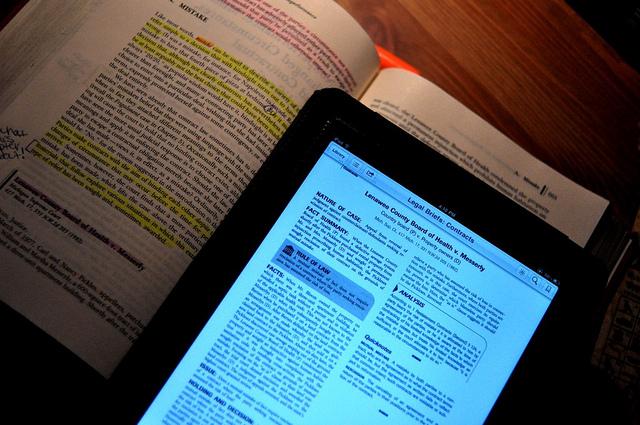District 203 is launching “Bring Your Own Device” this semester, a pilot program that integrates technology with classroom instruction. Students in certain courses can bring their devices from home to use at school. Devices include laptops, tablets, iPads, smartphones, kindles, nooks and other devices with internet access.
The district hopes to see a shift from an instructional teacher-based environment to a more collaborative, student-centered environment. Throughout the program, students and teachers will assess how technology can be used as an aid in the classroom and share feedback during five checkpoint meetings. At the end of the semester, teachers and administrators participating in the pilot will gather data and determine their next step.
Five teachers at Central are adopting the pilot. Science Teacher Matt Gresk, World and Classical Languages Teacher Jeremy Whitt, Humanities Teacher Eleanor Barbino, and Math Teachers Rob Porter and Jeff Danbom are all using BYOD in their classes.
“The district asked us to select five teachers at each high school,” said Assistant Principal for Curriculum Jackie Thornton. “Then the students who enrolled in these classes [are] eligible for the program.”
Students must log on using the school network for the pilot, so that inappropriate websites are filtered and blocked. According to Brett Thompson, a technology integration specialist at Central, the system is stable and easy to access.
Even with the protected network, Social Studies teacher Eleanor Barbino, who uses BYOD in her AP Macroeconomics and AP Microeconomics classes, will make sure that her students don’t misuse the technology.
“Part of bringing your own device is choosing to use it appropriately, and if you don’t there are consequences, and that is the cost,” said Barbino. “Even just following the rules is a microeconomic decision.”
Thornton also recognizes that the devices could distract students and views this possibility as a classroom management challenge for teachers.
“Teachers will have to look at planning in a different way because they have a different kind of distraction in kid’s hands,” said Thornton. “The respect the students have for the teacher and the teacher has for the students are really going to dictate how students are going to handle themselves.”
Thompson believes that it in essence, teachers have to decide how to embrace the technology.
“It’s a 21st century tool, and even though [technology] can be potentially more distracting than paper/pencil, we’re in high school, and kids still doodle on notebooks, pass notes, daydream [and] sleep, [so] it doesn’t matter what century you’re in,” Thompson said.
Senior Kirthi Bellamkonda has used her laptop during school for AP Macroeconomics, Honors Physics and AP Government and Politics. She believes the device helps her with organizing electronic files.
“It gives you a lot of flexibility with when and how you work,” Bellamkonda said.
Technology Integration Specialist Jennifer Madden agrees.
“The student can figure out how [he or she] learns the best in terms of learning styles,” Madden said.
Along with the instructional impact of the pilot, Thompson points out that the pilot has an important infrastructure element as well. Both Thompson and Madden play a part in ensuring that the school network is robust enough to provide good wireless connection for all students.
Currently, Central has about 1000 laptops, desktops, netbooks and iPads for student use, but according to Thompson, the devices used for the BYOD pilot run under a separate sub-network so that BYOD devices do not slow down the main network.
However, Thompson and Madden both realize that if the BYOD program is implemented, not every student will have his or her own device to bring. They believe that in that case, it is the school’s responsibility to meet the disparity.
“Right now we get excited about what the device is, but as technology increases and costs go down, it’s not really about the device, it’s about the instructional impact,” Thompson said.
Other possible obstacles behind the program are the troubleshooting of a variety of devices, theft and staff training and development on each type of device.
Despite these challenges, Thompson and Madden remain optimistic about the opportunities BYOD offers and view this as a positive change.
District 203’s ultimate vision for BYOD is a one-to-one student to device ratio, under the belief that easier access to technology will transform classroom instruction.
“It’s what we call a paradigm change,” said Thompson. “It doesn’t change what we teach, it changes how we teach.”



